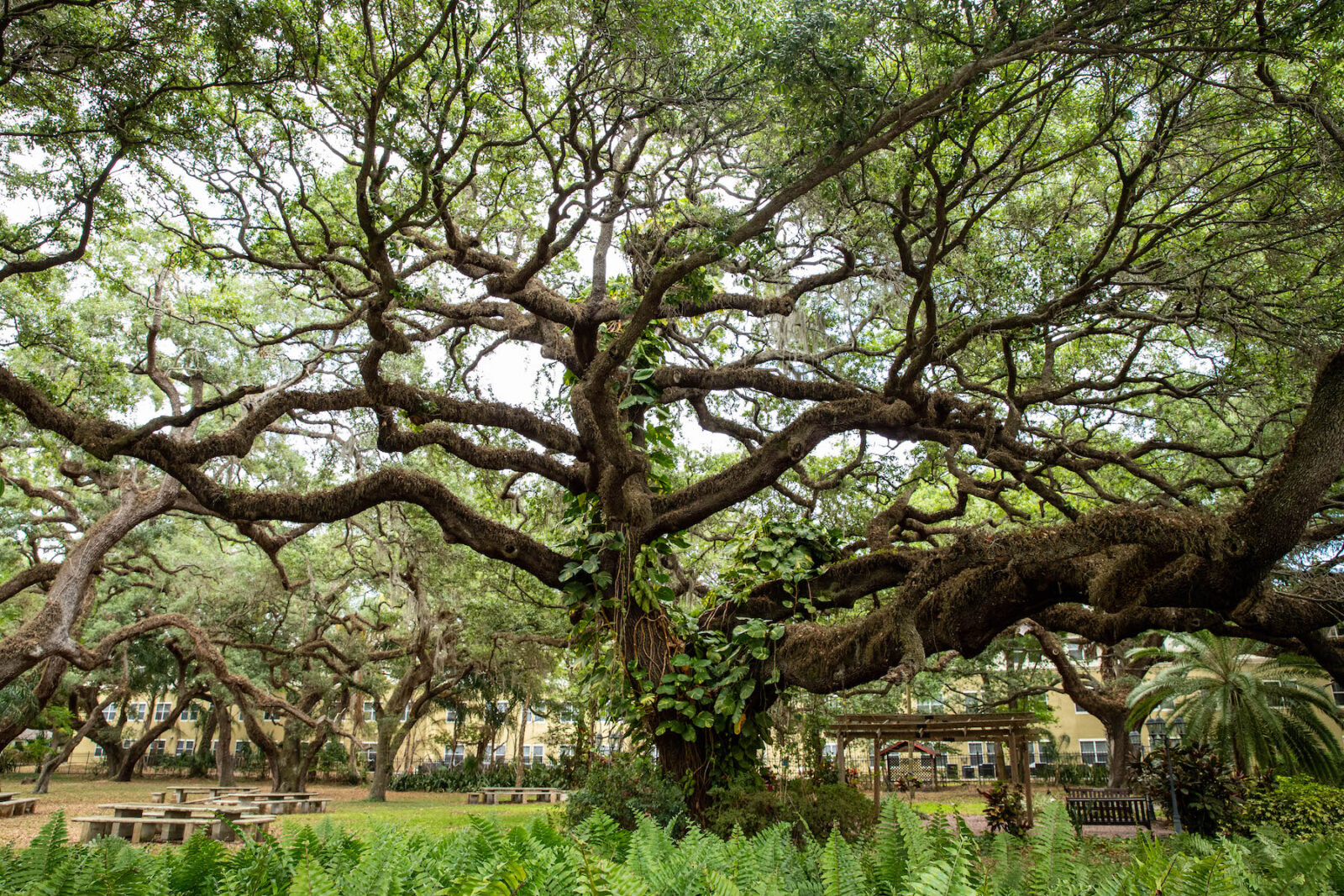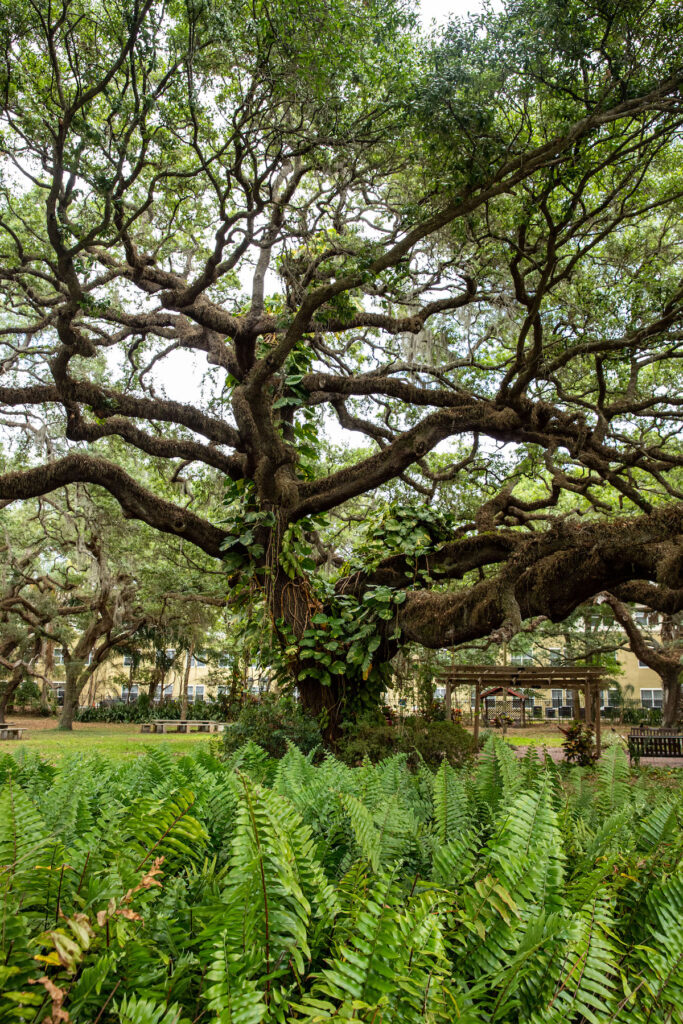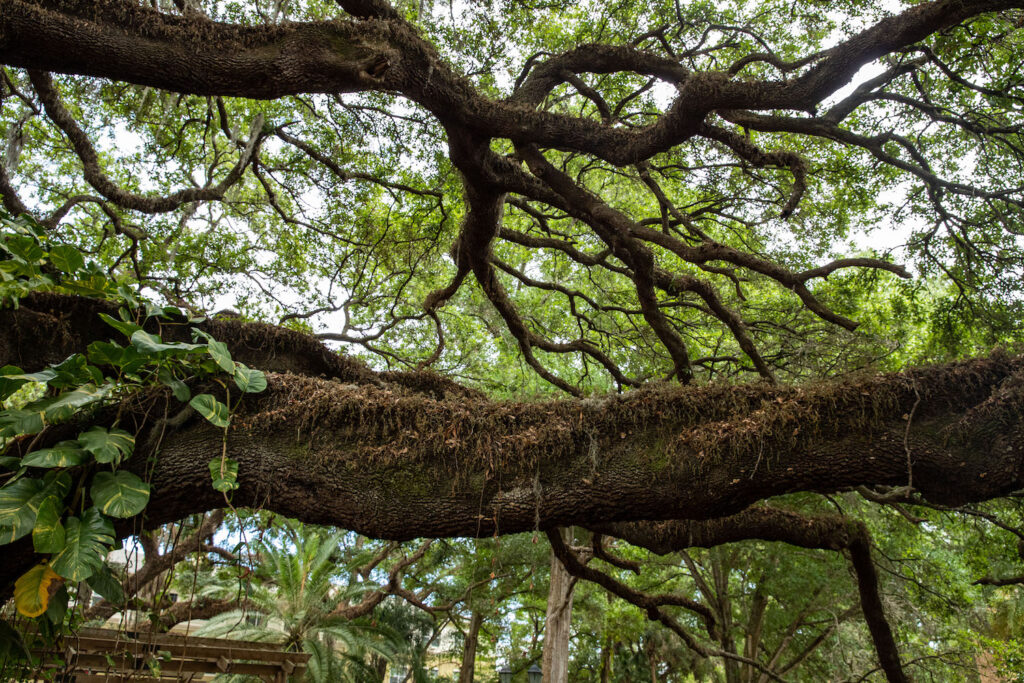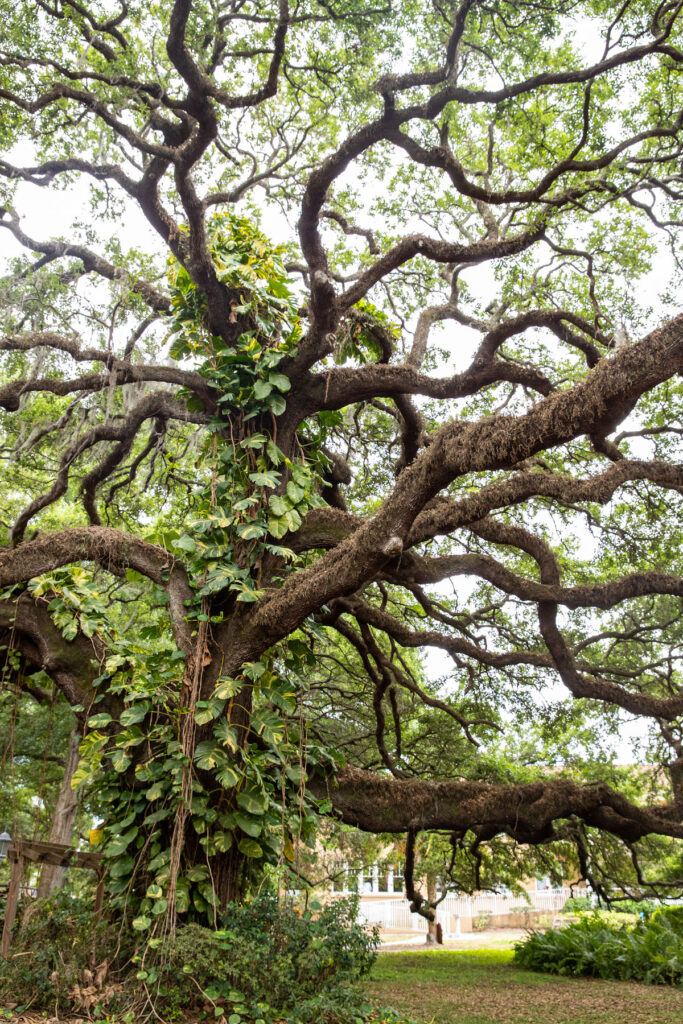
By Jennifer Kennedy
Greater Tampa Bay is adorned with gorgeous grand trees that provide sprawling, beneficial tree canopies. These valuable resources clean the air and provide shade from the hot Florida sun. They can help shelter homes and streets, conserve soil and absorb storm water runoff.
According to a 2019 Massachusetts Institute of Technology (MIT) Senseable City Lab Treepedia Study, Tampa has the highest green view index compared to 26 other major cities around the world.
What is a Grand Tree?
Grand trees are defined as having a trunk diameter of 32 inches or greater. They are a vital part of the ecosystem and protected by laws. Before planning any work on or around these trees, homeowners must ensure they are in compliance with local regulations. Permits are often required.
Laws defining and protecting trees vary between municipalities. Hillsborough County calls trees in good condition that belong to the genus Quercus and measure at least 34 inches in diameter at breast-height grand oaks, not grand trees.

Protecting Grand Trees
Rick Peterika, president of Tampa-based landscape architecture and urban planning firm Dark Moss, said the protection of trees should acknowledge not only the trunk, branches and leaves, but also the roots.
“If we want to continue to enjoy, enhance and develop grand trees, we need to respect all of their components,” Peterika said. “Trees have dimensional requirements that need to be considered when building structures.”
Following local laws and incorporating smart pruning practices will preserve the aesthetic beauty and countless benefits of GTB’s grand trees.

What are the tree regulations in my county?
To obtain a permit or inquire about local tree removal or pruning laws in your area contact:
- City of Tampa (813) 274-8694 or treequestions@tampa.gov
- Pinellas County (727) 464-3480 or bdrsenvgroup@pinellas.gov
- Hillsborough County (813) 272-5600 or Naturalresources@hcflgov.net
- Pasco County (727) 847-8126 or treeremovalpermits@mypasco.net
What is a Grand Tree?
Grand Trees generally include the following trees with a trunk diameter of 32” or greater:
- Acer rubrum, Red Maple
- Carya glabra, Pignut Hickory
- Carya illinoinensis, Pecan
- Cinnamomum camphora, Camphor
- Fraxinus tomentosa (sp. “profunda”), Pumpkin Ash
- Liquidambar styraciflua, Sweetgum
- Magnolia grandiflora, Southern Magnolia
- Magnolia virginiana, Sweetbay Magnolia
- Nyssa sylvatica, Black Gum (Black Tupelo)
- Pinus elliottii var. densa, Florida Slash Pine
- Pinus palustris, Longleaf Pine
- Pinus taeda, Loblolly Pine
- Platanus occidentalis, American Sycamore
- Quercus austrina, Bluff Oak
- Quercus durandii (sinuata), Durand Oak
- Quercus falcata, Southern Red Oak
- Quercus geminata, Sand Live Oak
- Quercus laurifolia, Laurel Oak (Diamond Leaf Oak)
- Quercus michauxii, Swamp Chestnut Oak
- Quercus virginiana, Southern Live Oak (Live Oak)
- Taxodium ascendens, Pond Cypress
- Taxodium distichum, Bald Cypress
- Ulmus alata, Winged Elm
- Ulmus americana, American Elm

Pruning Tips
Good pruning practices start with choosing the right company to provide proper care for your trees. When selecting someone to prune your trees, Hillsborough County Natural Resources recommends asking the following questions:
- Are they an ISA Certified Arborist or do they have one on staff?
- Is the pruning they recommend within ANSI A300 industry standards?
- Are they insured for liability and worker compensation?
- Can they provide the agreement in writing?





